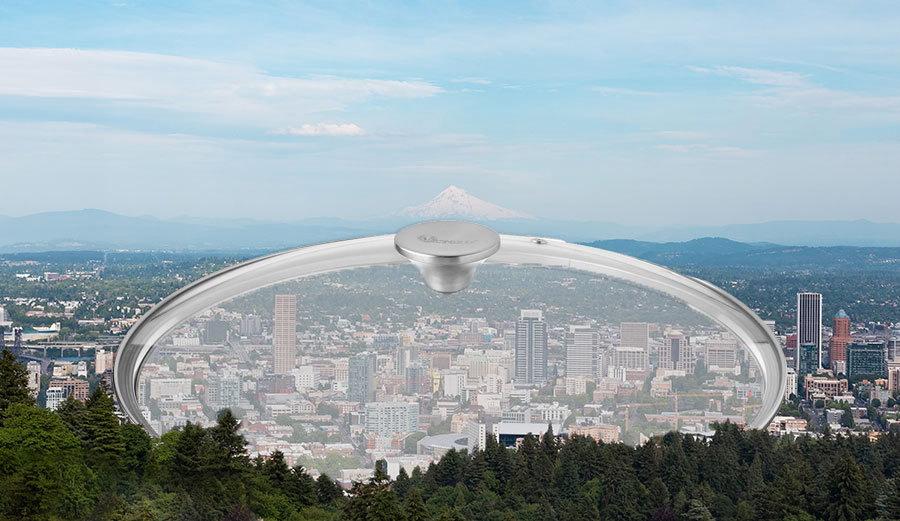
The city of Portland, Oregon, under the proverbial heat dome. Photo: Unsplash
I live in a very small town on a lake at the southern end of Vancouver Island, Canada. I grew up around here, and let me tell you that in my lifetime, it has never been as hot as it is right now. The heat dome is sitting on top of the Pacific Northwest, and it is wildly hot. So what’s causing it?
The town of Lytton, British Columbia, a tiny speck of a town in the southern interior of the province, was one of the hottest places on Earth on Sunday. Hotter than Dubai. Hotter than Death Valley. Las Vegas has never been as hot as it was that day. Monday was even hotter. By Tuesday, it was an oven: 49.6 Celsius, or 121 Fahrenheit. I’ve worked in Lytton often, doing tree work and fighting fires, and although it does get hot in the summers… Lytton never gets that hot. Ever.
Seattle hit 108F on Monday. Portland hit 116F. As The Guardian wrote, that Portland temperature “would beat the warmest day ever recorded in Houston by nearly 10 degrees.” The National Weather Service issued excessive heat warnings for Idaho, Montana, Oregon, and Washington. For a part of the world generally known for its relatively mild weather, it’s hot. Really hot.
When meteorologists first started forecasting the heatwave, many of them thought they had made a mistake. It was just too hot to be true.
“The predictions seemed completely outlandish,” Larry O’Neill, an associate professor at Oregon State University and Oregon’s state climatologist, told NBC News. “They were so crazy insane that professional forecasters and people like myself thought something must be wrong with the models.”
The term “heat dome” has been thrown around quite a bit in the last few days, and it’s not a term you hear often. It’s actually an established weather phenomenon that involves a high-pressure system. Right now, it’s dropped anchor over the PNW, stopping the cool air that normally flows in off the ocean keeping the temperatures down. Think of it like a frying pan with the lid on. Cool air can’t get in to cool the food, so it stays hotter for longer. The high pressure system forces the hot air downward, which heats it up even more as it becomes more compressed.
“According to the National Oceanic and Atmospheric Administration (NOAA), heat domes are most likely to form in North America during La Niña years — such as 2021 — when waters are cool in the eastern Pacific and warm in the western Pacific during the preceding winter,” wrote Tom Hale for IFLScience. “This temperature difference creates winds that push hot air eastward towards North America. Eventually, the warm air gets trapped in the jet stream, a current of air going counterclockwise around Earth, and becomes pushed over land in the Pacific Northwest.”
Although it’s easy to claim that it’s a result of our warming climate — and in all likelihood, it probably is — scientists are hesitant to directly link this weather event to it. Weather, after all, is different than climate. Climate is long term changes, while weather is short. All those short-term events eventually lead to the long term, of course, but one weather event does not necessarily prove anything. But it could point towards more proof — not that we need it.
The New York Times published an opinion article penned by a leading climate scientist named Dr Michael E Mann and the director of Climate Communication, Susan Joy Hassol. In it, they wrote:
“Might a heat dome have developed out West this past week without climate change? Sure. Might it have been as extreme as what we’re witnessing without climate change? Almost surely not. The science is clear on how human-caused climate change is already affecting heat waves: Global warming has caused them to be hotter, larger, longer and more frequent. What were once very rare events are becoming more common.”
So for the time being, I’ll be in the little town I live in, spending as much time as I can in the lake — but if this kind of thing begins to happen more and more frequently, we’re in for a world of hurt. Wildfire season is almost here, and if you’re anything like me, the next few decades look like they might be frightening ones.

